Ditch the DAW: alternative solutions to recording than a digital audio workstation
There’s more than one way to record with today’s technology and some of these methods might be just right for you
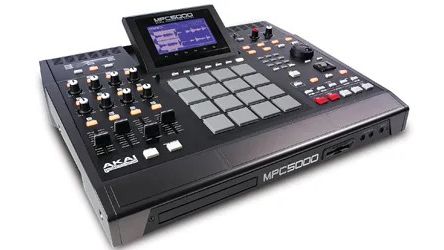
We asked co-owner Francis Fima if he was testing it out for some reason. “No, I do my songwriting with it. I turn it on, it’s ready to go, I don’t have to wait. It’s easy, fast, cheap.”
Point taken. And while the Digital Audio Workstation is the current alpha dog for recording, it’s not always the best solution for all possible projects. Just as some people have a sedan and a pickup truck, why limit yourself to one way of recording?
This is particularly true because DAWs continue to get more sophisticated and resource-hungry–they’ve gone from emulating a multitrack recorder to emulating a studio. But when recording a rehearsal, do we really need all that power? No, and as a result, we didn’t use to record rehearsals. Since then, we're seldom without a recorder. Song ideas don’t get lost any more, we can listen back to rehearsals, we have samples we never would have gotten otherwise, and it’s changed the way we work.
Then there’s portable recording with laptops, but there are alternatives that may do all you need in a slicker, faster way.
At some point, you’ll go from doing recording to being a recordist, recording becomes a way of life, you’re fluent with a variety of ways to capture what you need, and you always choose the right tool for the right job. So, this isn’t necessarily about ditching your DAW, but about other options in the wide, wide world of recording.
This roundup is a little unusual because we won’t be reviewing products, but methods of recording–each has pros and cons that are shared by most products within that genre. So no matter how much you love your DAW, read on... there are things out there that aren’t dependent on Microsoft or Apple (or Linux) operating systems.
Analogue tape recording
MusicRadar's got your back
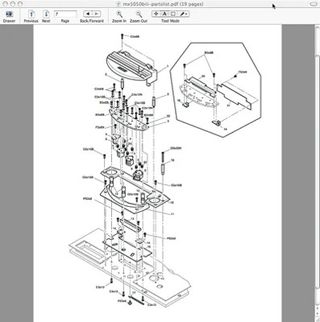
Analogue tape refuses to die gracefully. In fact, like tubes and vinyl, it’s making a bit of a comeback.
But why? Tape recorders are maintenance-intensive. Tape deteriorates, and while it’s not impossible to find blank tape, it’s not getting any easier. However, analogue enthusiasts point out–quite rightly–that computer-based DAWs require maintenance too, like updating, defragmenting, troubleshooting (only in marketing-land do computers work flawlessly), and the like. And while hard drives don’t deteriorate like tape, at some point they will go to hard drive heaven. Tape, when properly cared for, has a long shelf life. But the main argument from analogue tape fans is the sound: Tape is a processor, and for some music, it’s processing some people really like.
No new studio tape recorders are being made, so you’ll need to research companies that specialize in analogue recorders, like JRF Magnetic Sciences, Sprague Magnetics, ATR Services, B.A.S.E., and the like. These provide a variety of services and parts and sometimes reconditioned recorders. But also check with the manufacturers (TASCAM, Fostex, Otari, Studer) who used to make recorders, as they sometimes still have parts in stock (Figure 1).
As to buying an analogue recorder, do your research. Most recorders are at least a couple of decades old and loaded with mechanical parts that can wear out. Either spend the bucks for a recorder in good condition or dedicate yourself to restoration; it’s not unlike buying a classic car and having it become an obsession, as you search for something like a steering box in good condition. There’s some solid information on what you’re getting into with analogue tape recording at Sonicraft .
Also note that some pros combine analogue and digital by tracking to an analogue tape recorder, then immediately transferring the audio to a DAW for editing and mixing. This keeps “that” tape sound, but also, takes advantage of digital’s many talents.
Strengths: Sound quality that’s different from digital. Distorts in a way that no plug-in has totally captured. By definition, requires a mixer—so you have a physical control surface. When cared for, tape can have a long life. Many rock aficionados say that tape is the sound of rock and roll. Non-restored recorders typically cost a fraction of their original price.
Limitations: You need to align machines, replace heads, demagnetize the tape path, and so on. Editing is very limited compared to DAWs. Tape can stretch, and sometimes quality control is an issue. Limited ability to interchange projects with other studios. Noise reduction is needed to match digital’s dynamic range.
Quote from the target audience: “It’s worth the hassle because it sounds better than digital.”
Non-traditional DAW software
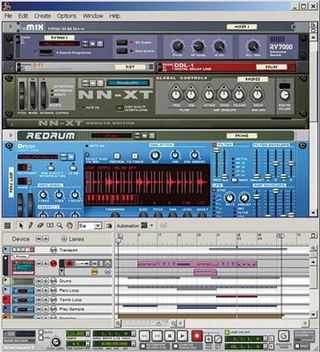
You don’t always need to record digital audio to create music; just ask the successful dance and audio-for-video composers who do everything with Propellerhead Software’s Reason. But often, the dividing line between DAW and non-DAW software is blurry; for example, what about Image-Line’s FL Studio, where some versions can record audio and some can’t? Or GarageBand, which has much in common with DAWs, but most would classify as an entry-level program? Or Acoustica’s MixCraft, which thinks like a DAW but isn’t priced like one? Then there’s EnergyXT, which is designed to get ideas down fast, but isn’t sold specifically as a “DAW.”
Rather than try to define this genre, let’s just figure that if Steinberg sells Cubase 5 for around $600 and Sequel 2 for $130, it’s clear Sequel is not the company’s “flagship DAW.” Yet these types of programs are surprisingly versatile, nimble, have relaxed computer requirements, are inexpensive, and can often get you making music faster than more comprehensive programs.
The top “non-DAW’ program would have to be Reason (Figure 2), a virtual MIDI studio. Although it doesn’t record audio (yet Propellerheads just announced a companion recording program, Record), it can ReWire into virtually anything that can record audio.
Non-DAW programs are sometimes self-contained and don’t support all protocols, for example, Acidized WAV and REX files, or the ability to import and export particular file types. Still, they’ll have enough options that you’ll at least be able to export audio that can be loaded into someone else’s DAW.
And there’s another factor: These programs can be like sample/loop/needle-drop music libraries on steroids. For example, Sequel 2 offers content in a variety of styles, and you can put music together in various genres really fast for about the cost of a single sound library CD- or DVD-ROM. Another “non-DAW” program that’s great for generating needle-drop-type music: Sony’s Cinescore, which does only one thing, generate music algorithmically but does it extremely well. If all you need are quick beds for a video project, do you really need to fire up your DAW?
Strengths: Sometimes simpler is better when the clock is ticking, or inspiration strikes. Can often get by with a less powerful computer. Most of these programs are laptop-friendly for those “on the go.” Less to learn, less to think about. Often include a significant amount of content.
Limitations: Can be difficult to interchange projects with other studios. Features like surround, audio-for-video, and even particular types of file support (e.g., REX files) may not be included—shop carefully to make sure there’s no “deal-breaker.”
Quote from the target audience: “I really don’t need anything else, and besides, I need to make the 5 p.m. Fed Ex dropoff.”
An entire class of “non-DAW” software consists of notation programs like Notion, Sibelius, Overture (by Geniesoft), and Finale. These let you compose using notation, yet playback the results through included sound engines and libraries. Notion integrates an orchestral library of sounds from the London Symphony Orchestra (recorded at Abbey Road Studios, no less). Sibelius’ Sound Essentials collection uses Native Instruments’ Kontakt Player 2 for playback, with sounds from Garritan, Sonivox, Tapspace, and others; Overture hosts up to 256 instruments and can save playback to a WAV file; and while Finale used to include (and still supports) a Kontakt Player 2 sound set, the latest version incorporates Garritan’s recently-introduced Aria Player Engine, which comes with a new set of samples. (Interestingly, Garritan pioneered playback with notation programs with GPO Studio, a host for notation programs.)
Mobile recorders
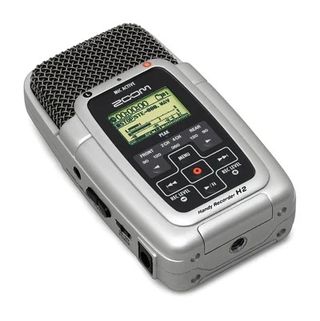
EQ did a roundup of these puppies in 09/08, and aside from Line 6 getting into the fray and most companies introducing incrementally new models, most of that article still applies. But based on my own experience, if I could have only one non-DAW recording device, one of these would be it.
I’ve used portable recorders since the days of cassettes to grab sound effects and samples. But we really learned their value when rehearsing with bassist/drummer Brian Hardgroove (Public Enemy), who insisted on having his Roland R-09 recorder running all the time. And with good reason: Many songs came out of taking phrases from jams, and we also had an instant “reality check” when trying out a new arrangement. When the rehearsal was over, I’d just plug the USB out into my computer, wait a few seconds, and bingo— plenty of material to check out and mine for inspiration.
I was so taken by this approach that now when I play guitar, Line 6’s BackTrack is always connected. As with the R-09, it’s managed to capture really useful musical ideas that otherwise would have been lost forever. And when I gig, I try to get a recording so I can debrief afterwards and decide what worked and what didn’t.
But the wide variety of units means you must be careful when shopping, and you may need more than one. For example, if you’re into collecting samples, you’ll want something you can carry around easily and conveniently—for small size and long battery life, Yamaha’s Pocketrak 2G ($450) is ideal. If you’re recording in surround, then the Zoom H2 ($334.99 as shown in Figure 3, or the newer H4n) is the ticket. For extreme fidelity (with a price tag to match), check out Korg’s MR-1 ($899). Need to overdub? TASCAM’s DR-1 ($399.99) does the job. For field recording, Sony’s PCM-D50 ($599.99) is like a mini- Nagra . . . and when you need something general-purpose, M-Audio’s MicroTrack II ($499.95) is very versatile. You get the idea: Define your needs as precisely as possible, because that makes it easier to find the unit that handles those needs.
Even then, though, there are surprises. With the Zoom H2, I recorded ambiences in surround “just because I could,” but have since found that having a choice of tracks for stereo can also be valuable, too.
Strengths: Choose wisely, and you’ll never be without a recorder by your side. Capture moments of inspiration and once-in-a-lifetime samples. Relatively inexpensive. Use for non-musical applications, like recording meetings. Quality of many units is good enough you won’t have to re-record a “real” version.
Weaknesses: Very few editing options and only a couple units allow overdubs. The most compact units tend to be designed more for journalists and podcasting, while the less portable units offer more musician-oriented features. Some units don’t have user-replaceable memory or batteries.
Quote from the target audience: “I was recording this melody line idea, but then I walked past this jackhammer that will be an awesome kick drum after I drop it down an octave or two, so I recorded that, too.”
Groove boxes
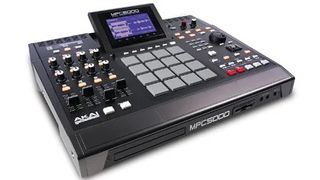
I always used to think of MPC-type groove boxes as instruments, not studios. But for hip-hop/rap/dance music productions, a good groove box might be all you need; I’ve seen plenty of musicians do entire recordings with these versatile devices.
Groove boxes have changed a lot since they were glorified drum machines. Thanks to cheap RAM, the sampling capabilities that were originally intended to load in new drum sounds can now record entire vocals. Akai’s MPC5000 ($3,499; Figure 4) even has detailed waveform editing, eight tracks of streaming multitrack recording, onboard analogue synthesizer, and tactile controls, although most groove boxes are compatible with hardware controllers if you want to get more physical with your music. Even Korg’s KP3 ($460), which traces its roots back to the KAOSS pad, not an instrument per se, has the sampling, resampling, control, and effects options that allow it to be a complete performance/ recording box.
Roland’s MV-8800 ($2,899) is another “studio in a (groove)box,” but you can accessorize it with a VGA monitor and mouse. Roland even promotes it as a device that you can take from initial inspiration to final master: There’s a CD-R/RW drive and various “mastering effects.”
Some groove instruments are software-based, and fall more into the “non-DAW” category. Programs like Native Instruments Maschine, MOTU BPM, Cakewalk Beatscape, SoniVox Playa, and others are designed to run on your computer rather than exist in a piece of hardware (although Maschine is an exception, it includes a slick hardware controller as part of the package).
One of the coolest aspects of recording with groove boxes is that they remove the line between performance and recording. Because the recordings aren’t about endless overdubs and comping, sometimes these machine-driven compositions actually sound more “human” than recordings done with traditional techniques.
Strengths: Compact, all-in-one solution doesn’t really need anything else. Devices of this type encourage spontaneity and performance moves. Over the years, some units have acquired multitrack recording and waveform editing. Often include storage/memory expansion options.
Limitations: Best suited to specific styles of music; I can’t imagine someone recording an acoustic guitar album with a groove box. Onboard sounds are usually heavily waited toward hip-hop/dance styles.
Quote from the target audience: “Hey, check out these beats. I’m definitely going to work a set around them.”
Guitar workstations
This product category is associated with DigiTech, because after the GNX3 kicked off the genre, their GNX4 ($589.95) put all the pieces together into one package—8-track solidstate recorder, built-in drum machine with drum patterns, tons of effects, mic preamp, USB computer interfacing, footswitches/pedal controller, analog interfacing for mixers/ amps/etc., and companion software (sequencing, editing, and librarian). The GNX4 may look like a floor effects box, but you can produce full-fledged demos on it. The only thing it really lacks is a mixer-type interface, but even then, you can mix on it, albeit not with the ease of some other non-DAW options.
Another “guitar processor with recording,” the Boss Micro BR ($319.50), is billed as a 4-track portable recorder, but you can record an additional 32 “virtual” tracks for alternate takes and comping. It also incorporates effects, rhythm patterns, USB interfacing for data transfer, and an SD card slot for storage. It even has a built-in mic if you get lyric ideas while you’re jamming. The Micro BR can load MP3 files, and do time-stretching for phrase training. While it’s not as complete a recording box as the GNX4, given the small size (think iPod) and low price, it’s somewhat like a portable solid-state recorder for guitar players.
A final option isn’t self-contained, but devices like the Korg Pandora PX5D, Line 6 POD X3, Line 6 TonePort, and DigiTech RP series include USB interfacing so you can use them as “guitar front ends/interfaces” for your computer. Are we in DAW-land yet? Not really, but using these external boxes removes latency issues, which lets you use inexpensive laptops to record your ideas. If the whole premise behind the “non-DAW” approach is to use something simple, fast, and efficient to get ideas down fast, these devices can facilitate the process, if you’re a guitarist.
Strengths: Double-duty, suitable for stage and studio. Not much more expensive (if at all) than effects-only devices. Tons of guitar-oriented effects.
Limitations: With the exception of the GNX, the ability to accommodate other signals (like quality condenser mics) is limited or non-existent; and only the GNX4 can really record complete demos.
Quote from the target audience: “As I was already playing guitar and using effects, I figured since it had drums and vocals, I might as well use it to record demos instead of just using it on stage.”
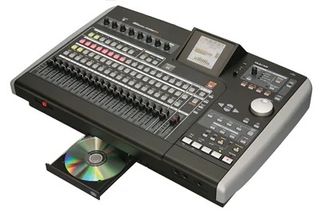
Multitrack recorders
TASCAM coined the word “Portastudio” back in the late ’70s to describe their portable, analogue cassette-based studio-in-abox, not only could it record, but there was a built-in mixer, and aux sends for outboard gear. TASCAM is still at the top of the Portastudio game, from the higher-than-entry-level DP-004 ($279) that records on SD cards, to the hard disk-based 2488neo.
Having used the original 2488, I can attest to the family’s surprisingly high level of performance. The 2488neo does 24 tracks (as well as 250 virtual tracks), and you can record eight simultaneous inputs, a rarity in portable studios. There are plenty of effects, including mastering effects like multiband compression (particularly handy, as the 2488neo includes a CD burner), guitar multi-effects, and 3-band EQ on all 24 channels. It has USB 2.0 for file transfers, and is portable; sure, there are some compromises, faders are 45mm instead of 100mm, and you can’t do sample rates above 44.1kHz. But in terms of finished product, you would never know a demo was recorded on a “budget” portable studio.
The DP-004 is more like a portable recorder that’s set up for multitrack work; it can record two sources at once, and includes a built-in condenser mic. You can consolidate the four tracks to add more overdubs, as well as mix them to a dedicated stereo master track. Like the 2488neo, the DP-004 has USB 2.0 for file transfers. Note that TASCAM makes more Portastudios than just these two; go to their website for details.
However, TASCAM doesn’t have a monopoly on the portable studio. Yamaha’s hard disk-based AW1600 ($1,499) is another full-featured portable studio (unfortunately, its big brother, the AW2400 with motorized faders, is discontinued) that allows burning your final results to a built-in CD burner. It can record eight simultaneous tracks from combo jacks (all with phantom power), with a total of 16 tracks in 16-bit mode and eight tracks in 24-bit mode, although there are also eight virtual tracks per physical track. Mix-wise, there’s a 4-band EQ on every channel, and the mix engine is the same as Yamaha’s 02R96 mixer; interestingly, the AW1600 has a “Pitch Fix” algorithm for fixing vocal pitch problems.
Fostex is another leader in this field, with its latest offering being the hard disk-based MR-16HD/CD ($699). It’s compact and records four tracks simultaneously while providing 16-track playback at 16-bit resolution. There’s also a built-in CD recorder so you can go from recording to final product in one box. It has several effects, including one optimized for guitar with amp simulation and distortion. However, this is only applied on incoming signals, so once you’ve recorded through these effects, there’s no “undo” other than re-recording. And while (like most of these recorders) it doesn’t do MIDI, it does have MIDI out for sending clock or MTC to an external sequencer; and there are both USB 1.1 and USB 2.0 ports.
Two other companies in the field are Korg and Boss. Korg’s D3200 costs somewhat more than average ($1,799), but the feature set is extremely capable: 12 simultaneous record tracks (including eight XLR mic ins with individually-switchable phantom power) and 32 tracks of playback (with eight virtual tracks for each physical track), 44.1/48kHz sample rates, 32-bit internal signal path resolution, 80GB hard drive (most hard disk-based portable studios use 40GB), a built-in drum machine with shuffle and humanize functions, non-destructive editing including time compression/expansion and adaptive noise reduction, “scene” and dynamic automation that records fader and pan moves (but no motorized faders, of course), and MIDI control over mixer parameters for additional automation options.
I’ve logged a few hours on the D3200, and it’s impressive: The sound quality is excellent, the workflow makes sense (helped considerably by the display and matrix of 16 realtime control knobs), and the effects are useful. A box like this even outperforms many of the “big studios” of yesterday whose gear cost hundreds of thousands of dollars... thank you, progress.
Korg also makes the D888 ($800), a no-frills 8-track (64 virtual tracks, plus a two-track stereo mix track) hard disk recorder with an 8-input/8-output mixer. It’s designed to be dead simple to operate; it basically looks like a mixer that records, with channel strips (including 3-band EQ with knobs, XLR and TRS ins with +48V phantom power, pan, and fader) and an LCD. You can record eight tracks simultaneously, and in addition to monitor and master outs, there are individual outs for channels 5–8.
In a lot of ways, the D888 is more of an easy-to-use capture medium, although it does include onboard effects, location points, and basic non-destructive editing. However, editing can take a while it shuffles data around, and writes to disk.
Boss currently offers five small studios, including the Micro BR mentioned earlier. Boss calls the BR-600 ($399) a “notebook studio,” and it’s the “Macbook Air” of the genre, thin and portable. It records to Compact- Flash cards, offers eight simultaneous playback tracks and 64 virtual tracks, and being made by Boss, it includes a drum machine (with velocity-sensitive pads—cool), guitar/bass effects, and vocal effects (including pitch correction). Conveniently, it can operate on batteries or AC.
Their top-of-the-line model, the BR- 1600CD ($1,399) is a 16-track (256 virtual tracks) hard disk recorder that can record from eight inputs simultaneously. It includes built-in effects (pitch correction, individual track EQs, 8 dedicated compressors, mastering effects, etc.), “instant” backing tracks with drums, bass, and loops, CD writer, and MIDI slave sync. If you can get by with 2-track simultaneous record and 12-track simultaneous playback (192 virtual tracks), you can save about $350 by going for the very similar BR-1200CD.
One of the more interesting devices of this family, Zoom’s HD16 ($1,249.99), is a 16-track recorder that’s laid out like a mixer and feels more like a stand-alone hard disk recorder. It has built-in effects, mixing, mastering, and CD burning. But the really clever part is that if you want to bounce the files over to a DAW for further editing, the HD16 becomes a full-fledged control surface. Smart.
Another unusual entry into this category is Cakewalk’s Sonar V-Studio 100, which incorporates an 8-channel digital mixer, onboard SD recorder, a control surface for DAWs, built-in channel strip effects, and an extensive software bundle. What makes it unusual is that it’s useable with a computer, without a computer, for live performance, or in the studio. For example, you could prepare backing tracks in a computer, transfer them to the V-Studio 100’s SD recorder, then take the unit out for live performance, plug instruments/mics into the mixer, then record the live performance (including the backing tracks) into the SD recorder.
Strengths: Portable studios incorporate most of the functions you’d expect from a recording setup, often including a drum machine. The physical interface is easy to use. Can usually transfer files via USB or card reader. Models with CD-R/RW drives let you create a finished product. Cost-effective, and generally a no-brainer to operate.
Limitations: MIDI, when present, is limited to sync functions, not recording or playing back MIDI data. Construction sometimes cuts corners to hit a price point. Generally use short-throw faders. Editing operations may be slow.
Quote from the target audience: “Life is too short to waste it reading manuals, going through a zillion menus, or dealing with computers for recording music.”
Hard disk recorders
Remember the ADAT? It’s what brought digital recording to the masses. But when it ran its course, it was replaced by stand-alone hard disk recorders that unlike portable studios, required an external mixer as well as outboard effects, mic preamps, and the like. These stand-alone recorders are the heirs to the stand-alone multitrack recorder legacy.
There’s no significant editing; that’s best done with a computer. As a result, all these units can transfer their data over to a computer for editing. Not surprisingly, Alesis was one of the first to obsolete the ADAT with the HD24 (Figure 6; $2,499), which despite being introduced earlier this century remains popular and in production. It’s a 24-track recorder with 24 ins and outs, making it very useful for remote and location recording; because Alesis figured out a different way to write data to the drive, it can use inexpensive IDE drives, which are actually less expensive than an equivalent amount of ADAT S-VHS tapes. While the HD24 is limited to 44.1/48kHz, the HD24XR replaces the A/D and D/A converters for improved performance and the ability to do 88.2 and 96kHz sample rates (upgrade standard HD24 machines for about $1,000).
The HD24 includes two hot-swappable media bays for replacing or backing up media, and also has a built-in FTP server to transfer data to computers (the hard disk file format is proprietary). However, a better solution is the Alesis Fireport ($249), which allows for FireWire transfers.
Then there’s TASCAM’s X-48 ($4,999), a 96kHz/24-bit, 48-track “Hybrid” Hard Disk Workstation that also includes a 60-channel digital mixer with automation and processing. A VGA output provides the GUI and editing features typically associated with a computer-based DAW, aided by the ability to plug in a mouse and keyboard. As to data transfer, it supports external FireWire hard drives (but also includes an 80GB internal drive), Gigabit Ethernet, and AAF export of its Broadcast WAV audio files. Another cool transfer- oriented feature, “tape mode,” simplifies file management by creating one audio file per track. And varispeed fans, take heart: It has one.
In a way, the X-48 crosses over between stand-alone hard disk recorders and “studio-in-a-box” solutions, because you can capture with it live, then in the studio, use the VGAbased DAW-type interface where each channel provides 4-band parametric EQ, dynamics processing, and four VST plug-in insert slots.
Another option, the JoeCo Black- Box, is a 24-track stand-alone recorder that records to an external USB2 disk drive. This makes it easy to take the Broadcast WAV files recorded on the drive, and load them into a workstation for editing. BlackBox is intended as a capture device for live performance, specifically, for patching into the insert points on a mixer’s channels, but you can stack units for more than 24 channels. It’s also possible to buy optional ADAT, AES/EBU, and balanced analogue interfaces.
Strengths: Sidesteps computer OS issues for increased stability. More rugged than typical laptop-based setups. Easy to operate, and well-suited to live recording.
Limitations: Not as flexible as computer-based units. Aside from the X48, files need to be transferred to something else for significant editing and mixing.
Quote from the target audience: “Take my studio apart to go do a live recording? What are you, crazy?”
Workstation keyboards
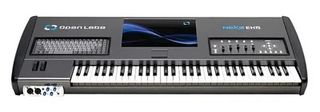
Today’s workstation keyboards, like the Roland Fantom G, Yamaha Motif, and Korg M3, are like studios that just happen to be designed around a keyboard. Unlike the many recording options that lack MIDI, keyboard options excel at MIDI, with the M3’s touch screen, you can even change note lengths and positions with the tip of your finger on the piano roll screen.
But they can also record and playback audio by treating audio as long samples and playing them back by triggering them at the right time. There may be limitations as to how many tracks you can record, but it will be enough to let you add vocals and other acoustic instruments and of course, the workstation can supply a whole lot of orchestration on its own.
Another option flips the concept of adding a studio to a keyboard by adding a keyboard to a studio. Open Labs makes a line of products that are a bit larger than the average keyboard workstation, but typically include a QWERTY keyboard, 15" touch screen, and control surface(s), all of which hook into a fast, capable Windows-based computer. As a result, you can run a variety of programs (e.g., Live, Sonar, Pro Tools, Samplitude, etc.) as well as virtual instruments. Open Labs products include Riff software, a custom program optimized for hosting virtual instruments; you’ll also find standard computer ports like FireWire, USB, Ethernet, and a PCI Express slot.
And this is a good way to end our journey, because, with the Open Labs line, we’re sort of back again at the DAW, although in a very different format!
Strengths: Ideal for those doing a lot of MIDI orchestration. One of the few non-DAW options that are serious about MIDI. Typically includes hardware for realtime control. Some can appear as plug-ins within a DAW and have extensive editing software. Many are expandable with hard drives, USB sticks, networking, etc.
Limitations: With the exception of Open Labs, not oriented toward recording lots of hard disk tracks. Editing may be limited compared to computer software. Physically large, but then again, you do need a keyboard to play the sounds.
Quote from the target audience: “I do a lot of work with MIDI keyboards, so it can be a lot easier to sketch things out, or even complete them, in the keyboard. Besides, if I really need deep editing, there’s computer compatibility.”
There is indeed a world beyond DAWs. They’re still the most powerful way to capture, edit, process, and mix music, but of course, power always comes at a price. Sometimes all we want to do is make music, and sometimes we want to capture it before it goes away.
Check out some of these alternative ways to record, and you might find yourself being more productive, writing more songs than ever, or even getting involved with different ways of making music. And if you really want to get heavy with the editing, never fear: Just about anything can be transferred to your DAW of choice.
Many portable recorders have a spec like “eight physical tracks and 64 virtual tracks.” This means you can record multiple takes for each of the physical tracks (in this case, up to eight) but you can’t playback more than eight tracks. One application for virtual tracks is recording, say, eight vocal or guitar solo takes into one track, then choosing which one you like best without having to use up other tracks. In some cases, you can use virtual tracks to bounce pieces of the virtual tracks to the same track or a different track; this varies from unit to unit, so check the specs.
Get the MusicRadar Newsletter
Want all the hottest music and gear news, reviews, deals, features and more, direct to your inbox? Sign up here.
Electronic Musician magazine is the ultimate resource for musicians who want to make better music, in the studio or onstage. In each and every issue it surveys all aspects of music production - performance, recording, and technology, from studio to stage and offers product news and reviews on the latest equipment and services. Plus, get in-depth tips & techniques, gear reviews, and insights from today’s top artists!

"If I wasn't recording albums every month, multiple albums, and I wasn't playing on everyone's songs, I wouldn't need any of this”: Travis Barker reveals his production tricks and gear in a new studio tour

“My management and agent have always tried to cover my back on the road”: Neil Young just axed premium gig tickets following advice from The Cure’s Robert Smith

